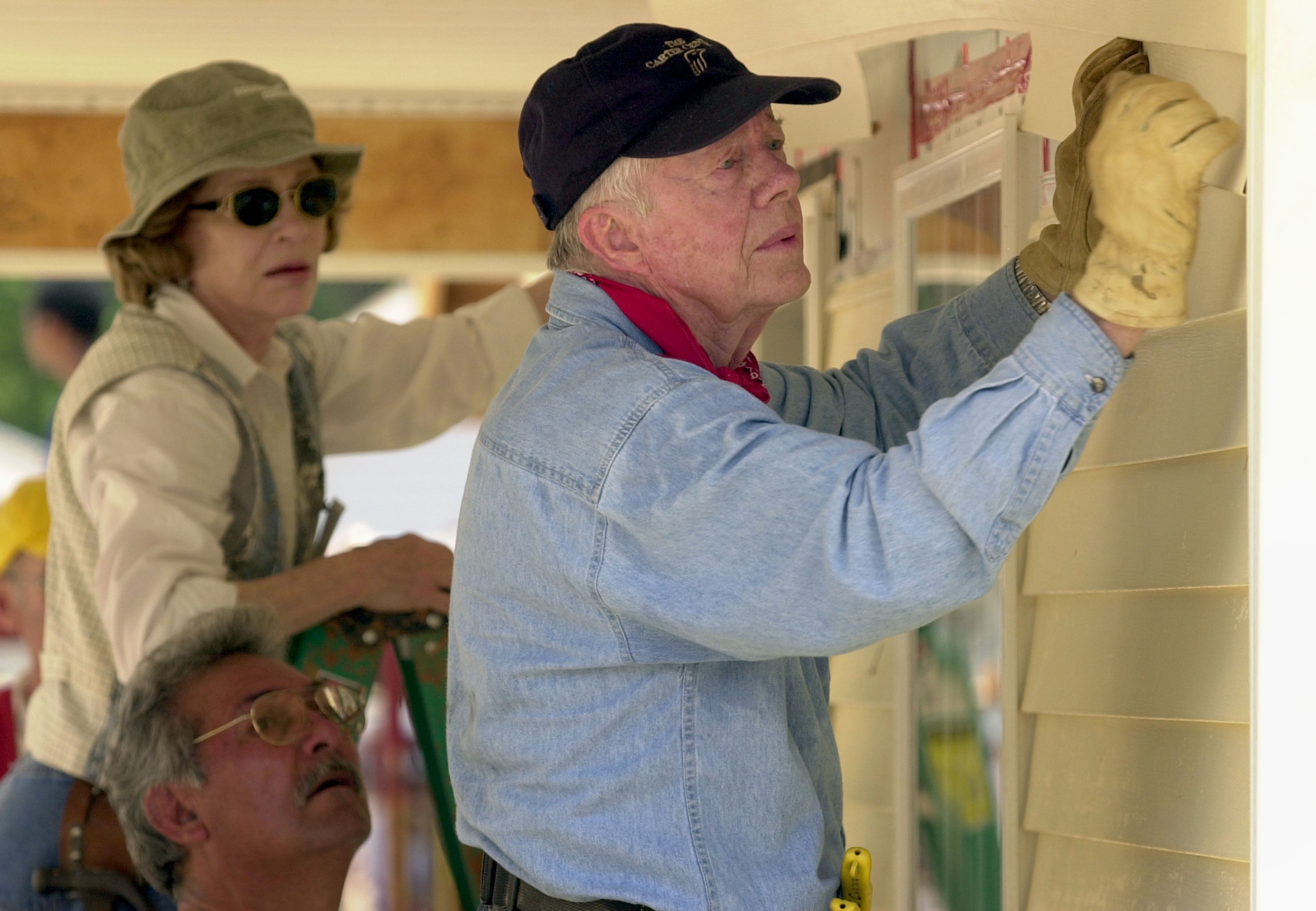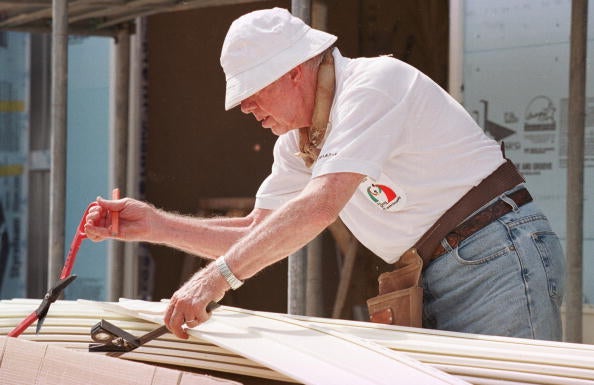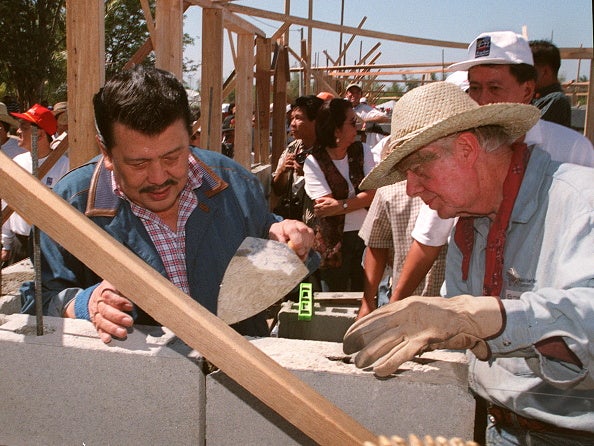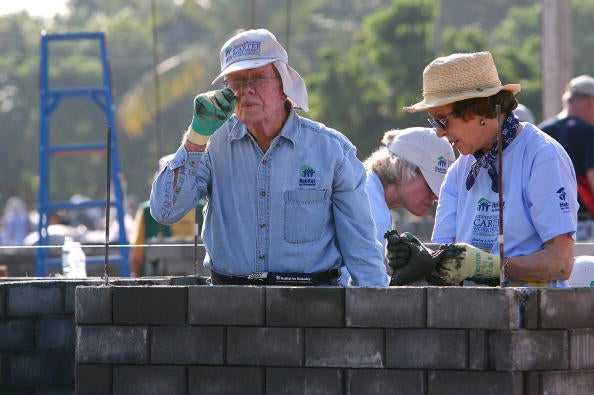How Jimmy Carter spent his final years building houses for the poor as he continued life of public service
Former president helped build, renovate and repair more than 4,331 homes with Habitat for Humanity

Your support helps us to tell the story
From reproductive rights to climate change to Big Tech, The Independent is on the ground when the story is developing. Whether it's investigating the financials of Elon Musk's pro-Trump PAC or producing our latest documentary, 'The A Word', which shines a light on the American women fighting for reproductive rights, we know how important it is to parse out the facts from the messaging.
At such a critical moment in US history, we need reporters on the ground. Your donation allows us to keep sending journalists to speak to both sides of the story.
The Independent is trusted by Americans across the entire political spectrum. And unlike many other quality news outlets, we choose not to lock Americans out of our reporting and analysis with paywalls. We believe quality journalism should be available to everyone, paid for by those who can afford it.
Your support makes all the difference.He was the oldest living president and had been out of the White House for more than 35 years, but Jimmy Carter never stopped working to improve the lives of others — much of which included building homes for the needy.
Even well into his 90s, Carter put on a hard hat and volunteered with Habitat for Humanity, the nonprofit organization he often partnered with through The Carter Center.
The one-term president — who died Sunday at his home in Plains, Georgia — worked alongside 103,000 volunteers in 14 countries to build, renovate and repair 4,331 homes with Habitat for Humanity for more than 35 years. Often, Carter and his late wife, former first lady Rosalynn Carter, volunteered together.
The couple first participated in a Habitat for Humanity project in 1984 in New York City. Carter discovered the organization while on a run. He recalled that he passed by a building and thought, “Rosalynn and I should come up and give them a hand.”
“When we left the White House, we could have done anything,” Carter once said. “But our choice was to volunteer as Habitat workers, and that’s been a life-changing experience for us.”

In September 1984, the Carters and a dozen other volunteers made their way to New York, where they worked on a six-story apartment building that gave safe and affordable housing to families. For one week, the Carters helped build 19 units and returned the following year to finish the building.
The work unknowingly sparked an annual tradition for the Carters to spend one week volunteering with Habitat for Humanity in a different location around the world in what became known as the Carter Work Projects.
Habitat for Humanity was founded in Americus, Georgia — near Carter’s hometown of Plains — in 1976 by Millard and Linda Fuller. The organization aims to help build or improve homes for families in low-income or communities in need. It relies on volunteers and other Habitat for Humanity homeowners for manual labor, which is called sweat equity.

Over the years, the Carters have volunteered in areas impacted by natural disasters or humanitarian crises.
In 2008, Carter and his wife joined volunteers in helping rebuild communities along the Gulf Coast of Mississippi, Louisiana and Texas after Hurricane Katrina.
They traveled to Haiti in 2011 and 2012 to rebuild more than 100 homes for those affected by the devastating earthquake. They helped move more than 150 families from tents or makeshift shelters into safe homes.
“One of the things Jesus taught was: If you have any talents, try to utilize them for the benefit of others,” Carter said. “That’s what Rosa and I have both tried to do.”

The last Carter Work Project the former president participated in was in 2019. At 95 years old, Carter showed up at the site of the build in Nashville, Tennessee, sporting fresh stitches and a black eye.
“I fell down and hit my forehead on a sharp edge and I had to go to the hospital,” Carter told reporters. “They took 14 stitches in my forehead and my eye’s black, if you noticed.”
“But I had a number one priority and that was to come to Nashville and build the houses!” Carter said.
Join our commenting forum
Join thought-provoking conversations, follow other Independent readers and see their replies
Comments